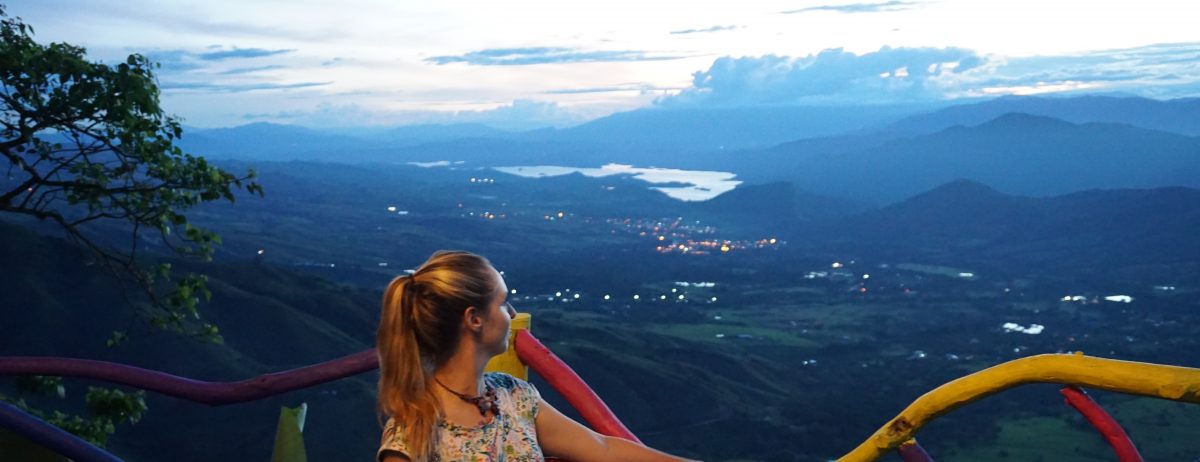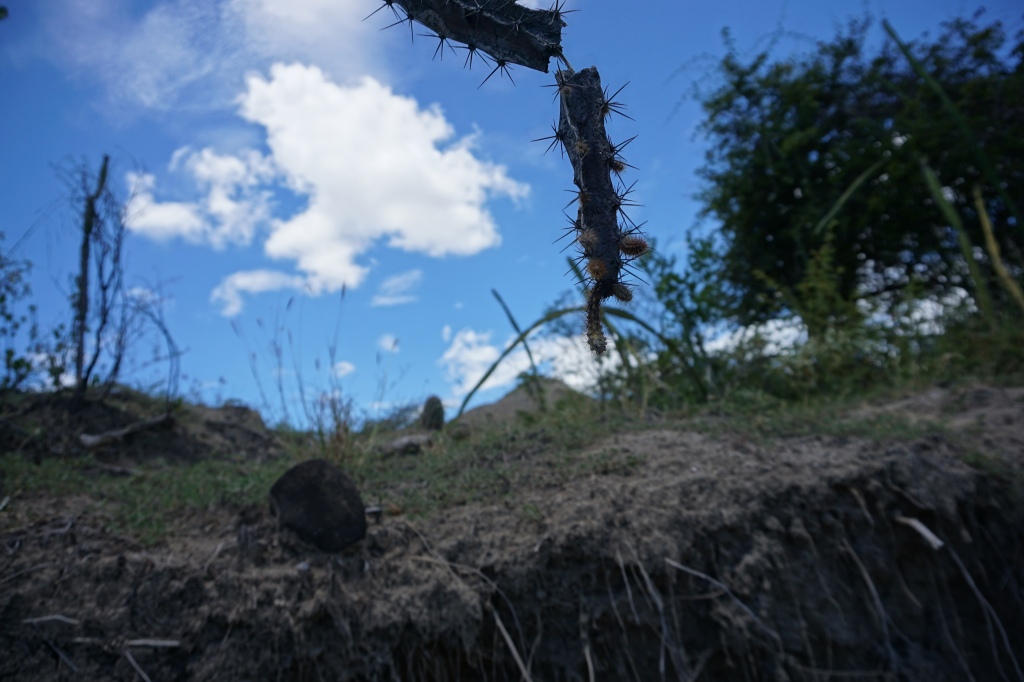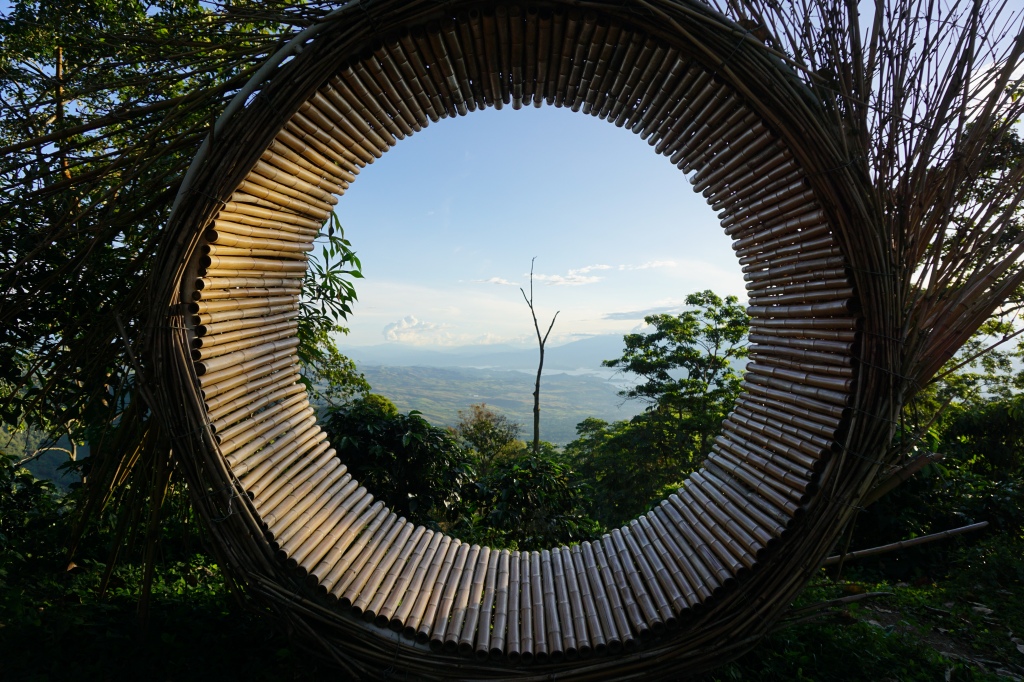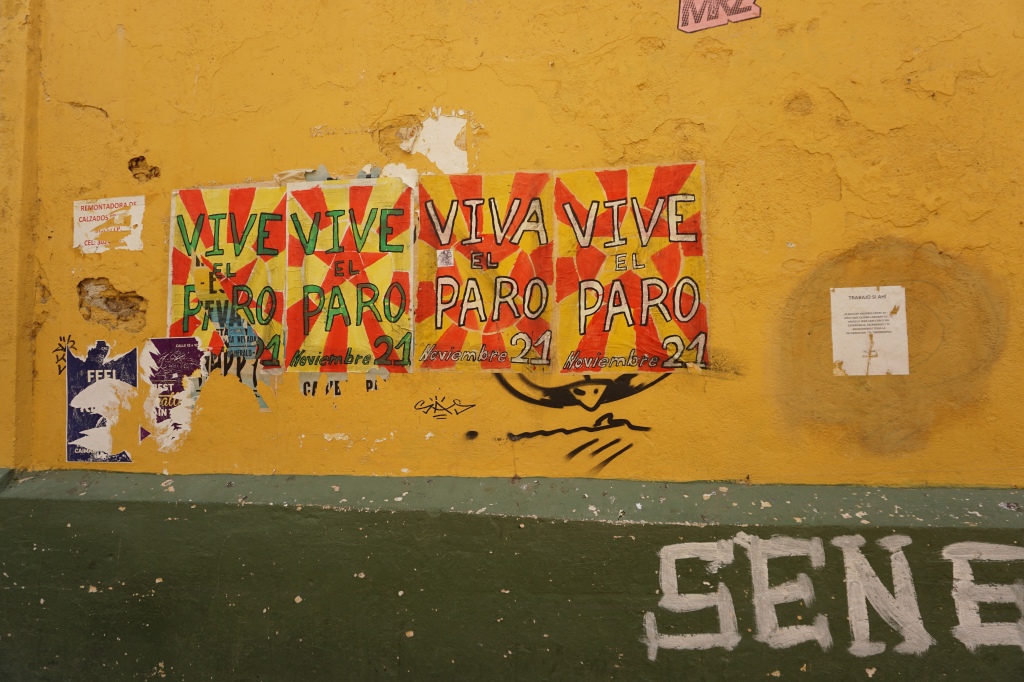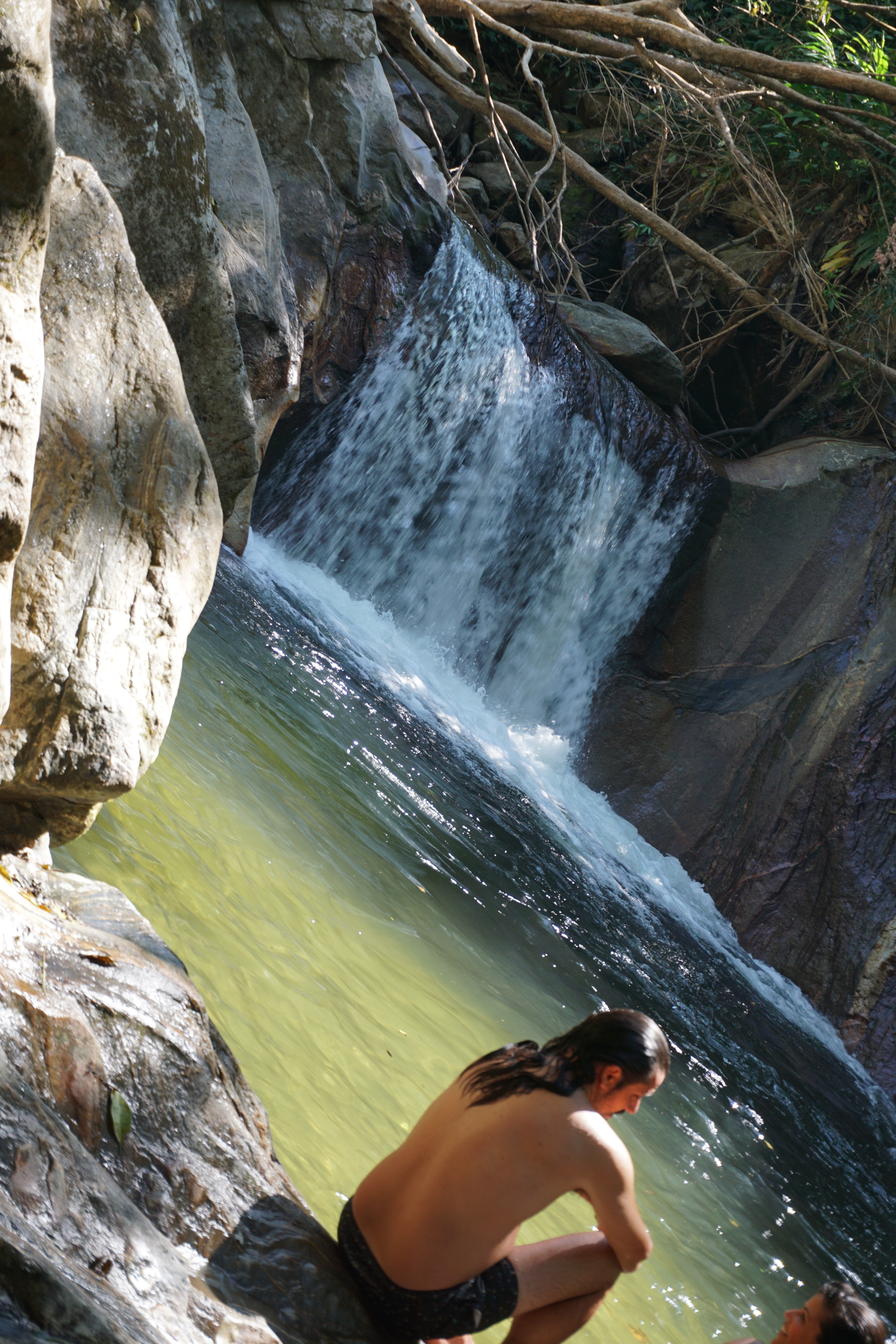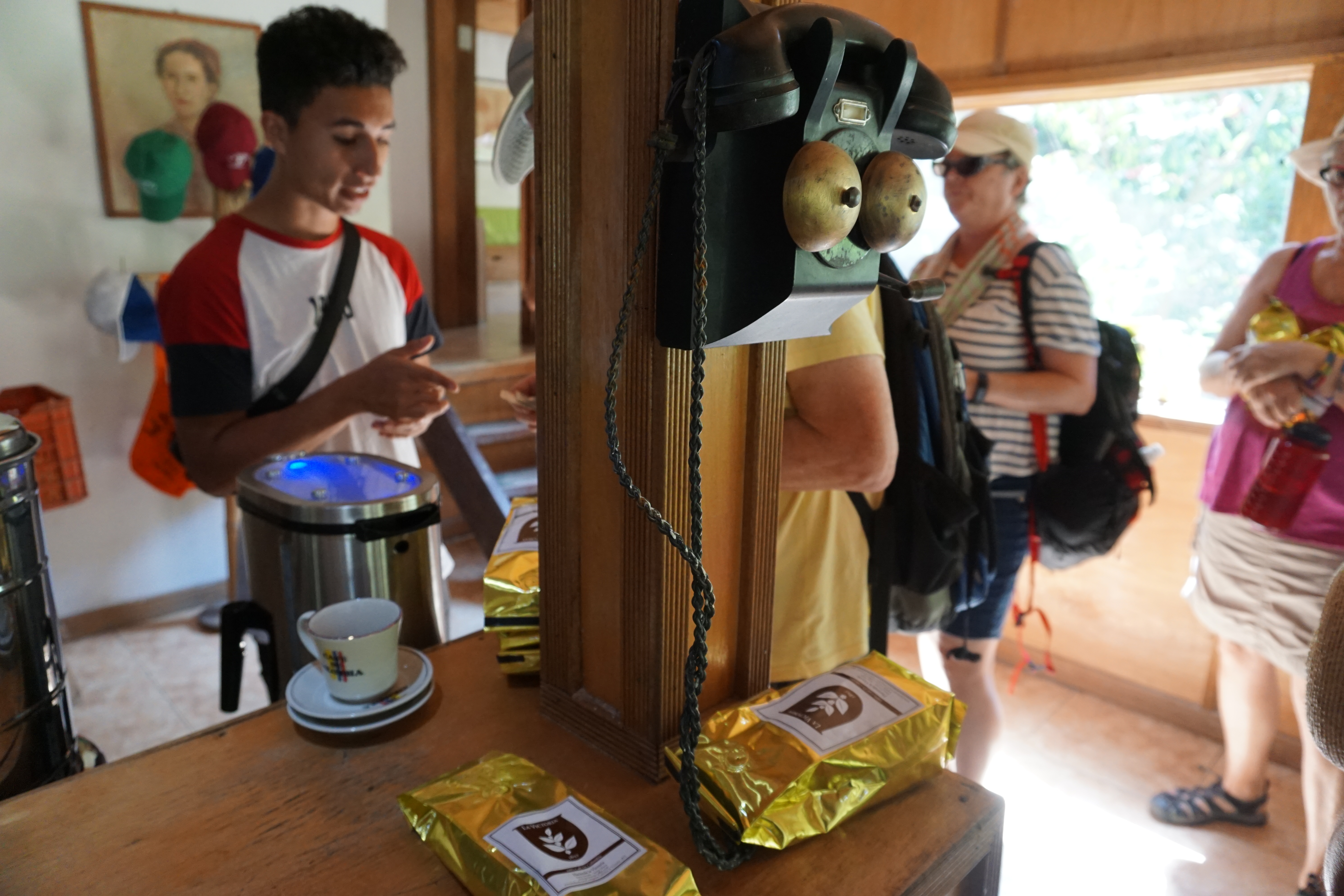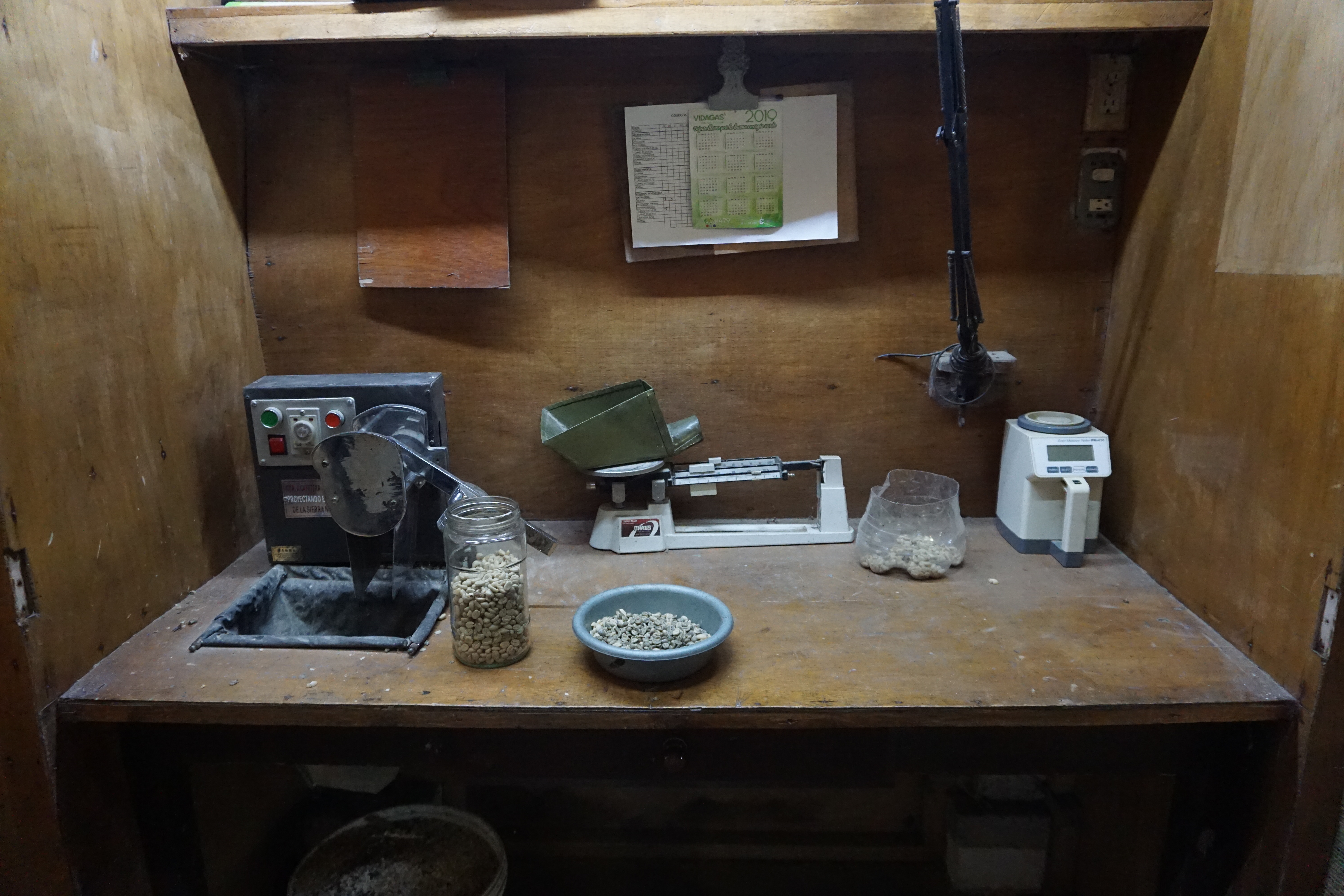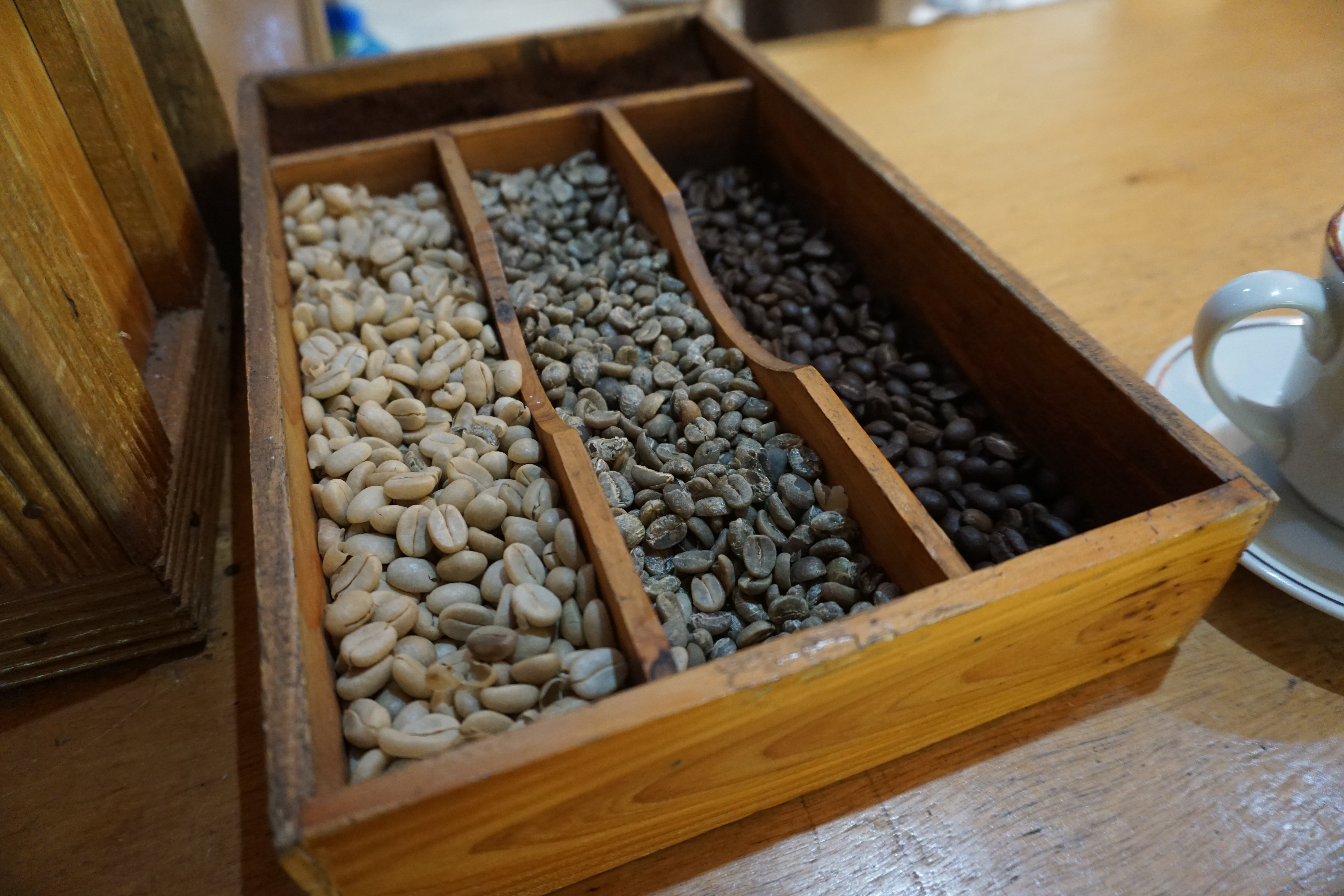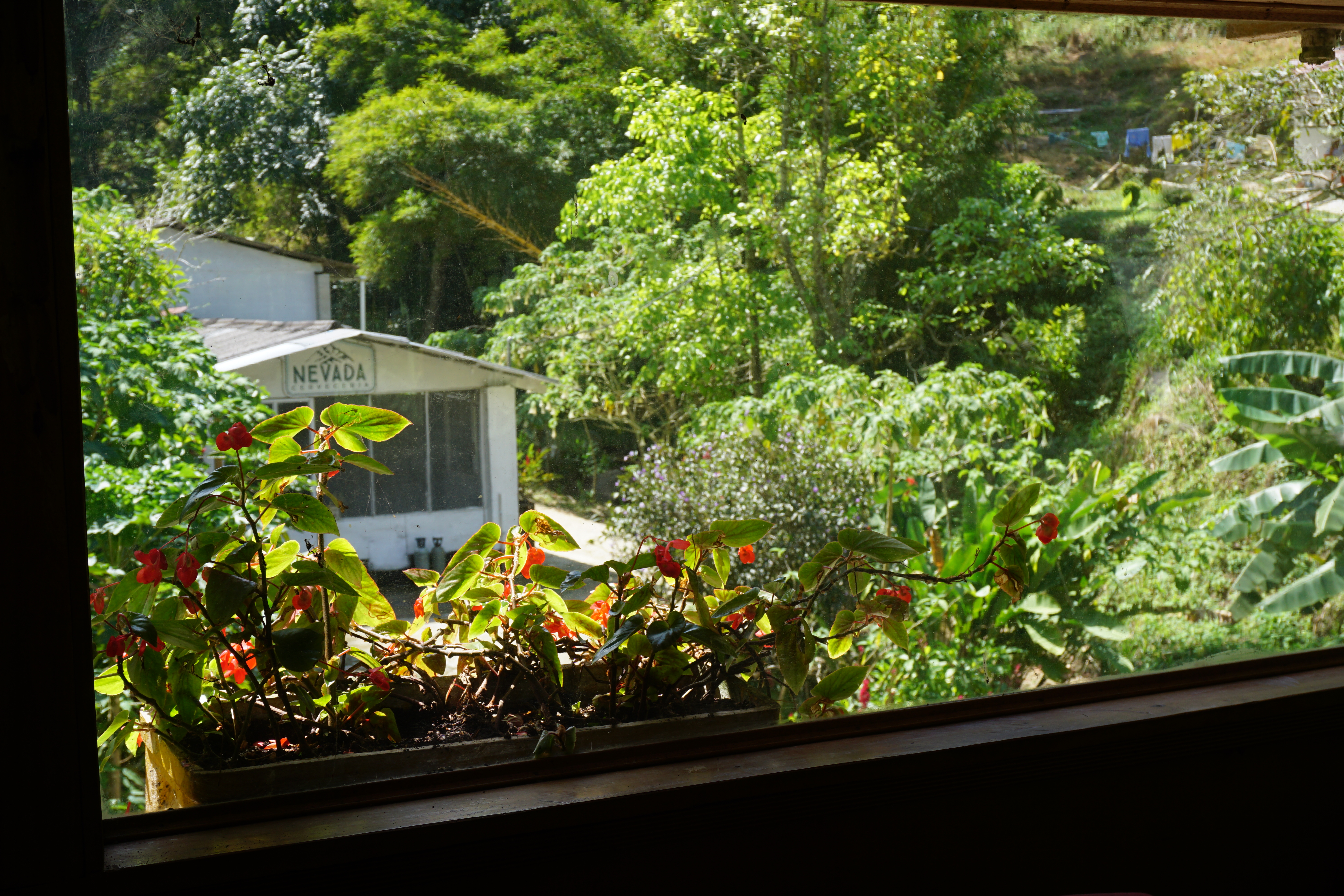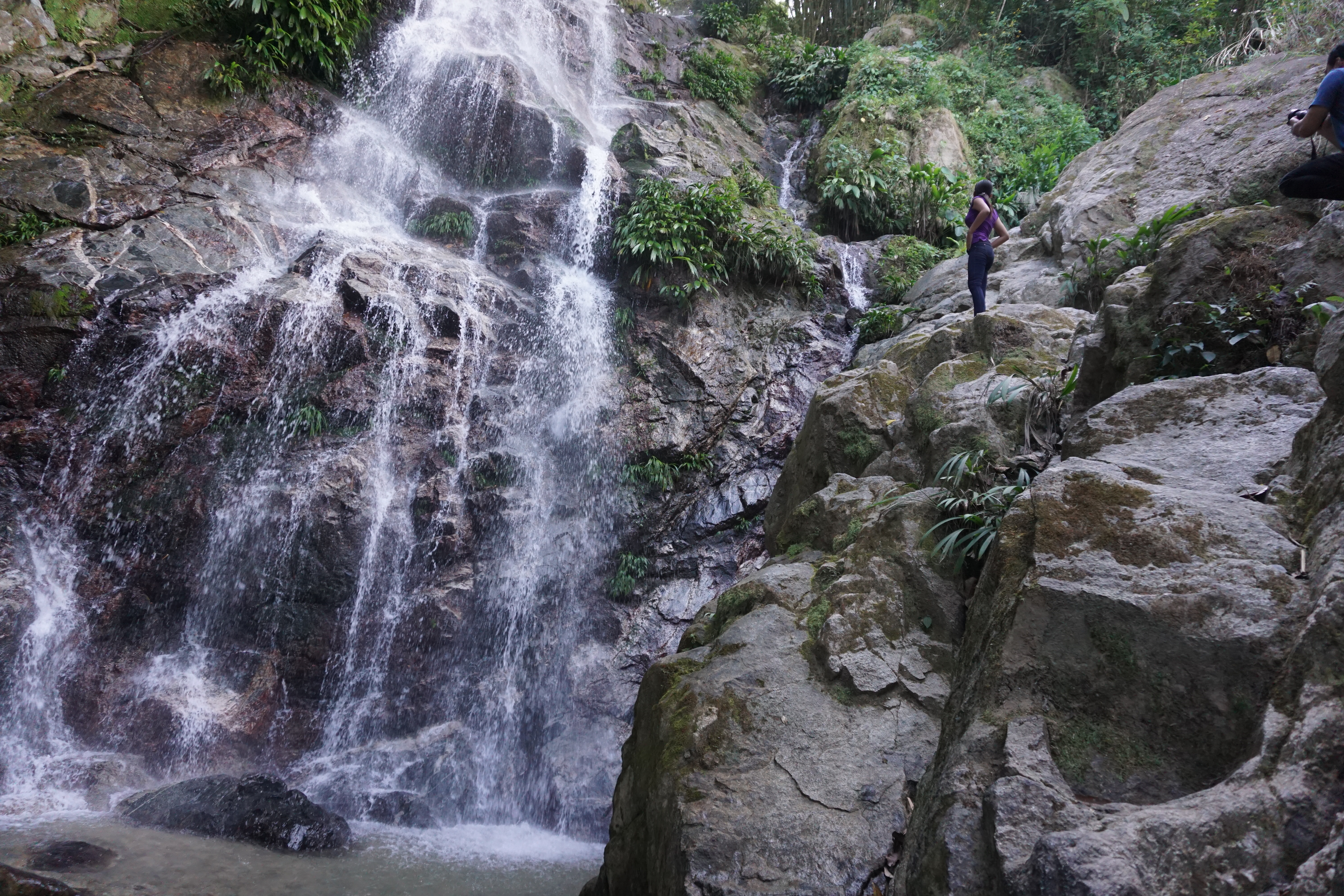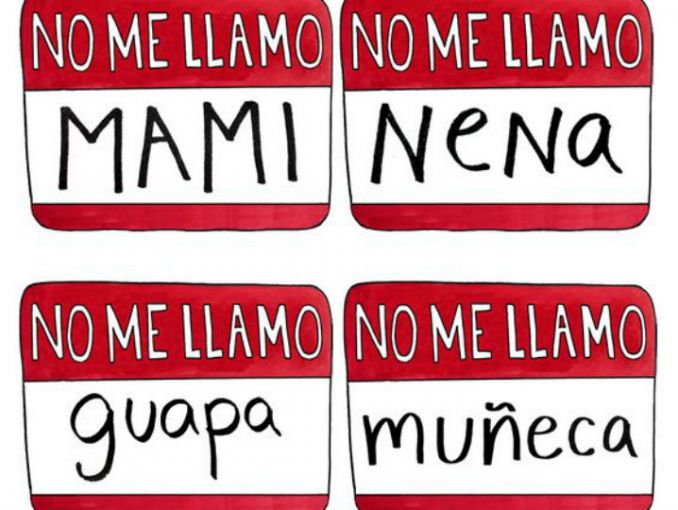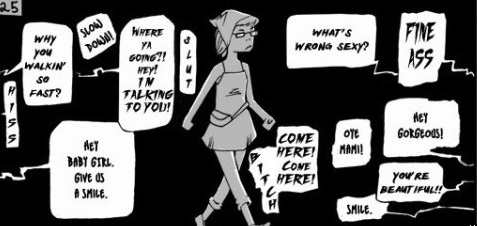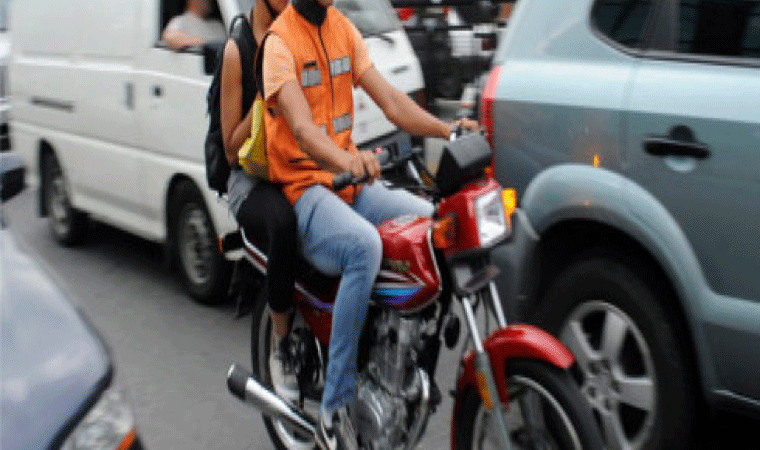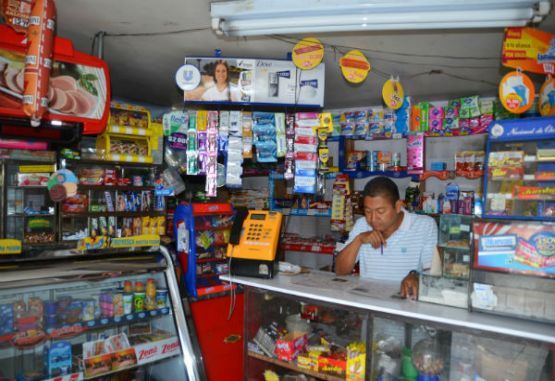When I asked about Tunja, I got lots of “there’s nothing there” and “What on earth are you staying there for?” I just shrugged and explained it was a resting place before arriving to Villa de Leyva for the weekend. I knew I would be getting there after a week of trekking and a day of spelunking, so I didn’t mind staying in a less touristy place for the night just to rest if it meant waking up and heading to my weekend destination just an hour or so away.
Well, let me be the first to say, that I left with a feeling of complete disagreement with all the nay-sayers that had told me Tunja wasn’t worth it. As the capital of the department of Boyaca, this city has a lot to offer in the way of history and architecture. In fact, I learned that at least 3 or 4 Colombian presidents had their origins in Tunja, Boyaca.
After a restful night’s sleep, I woke up in my hotel room, enjoyed another hot shower (what a luxury!) before having breakfast. I chose the pancakes option over the arepas, and was mildly disappointed — they were served with honey and were utterly flavorless, like a softer, corn-flour-free arepa. But meh, again, a full stomach supersedes all gripes about the quality of the meal when I travel on a budget. I’ve went hungry enough times to know that I am living a life of luxury, whether it seems that way or not.
I enjoyed getting to bundle up before heading out to explore the square of Tunja. The hotel itself was quite lovely, in an old shopping center with colonial architecture and old world charm. Since it was only about half a block from the central square, I could see what it had gotten “Fabulous Location” on Booking.
Many had complained about the cold in this city. After being in Colorado and even New Mexico in winter, I couldn’t help but muse at how little context many Colombians have when it comes to judging if a place is cold or not. Yes, I wore a light jacket in Tunja, but I would’ve been comfortable without it. As a contrast to the suffocating heat of Valledupar’s draught and the relative heat of Santander, I was loving the chilly breezes and chuckling at what I considered the exaggerative bundling up that people did in the city — not for the last time during this trip. You would think they would have adapted to the temperatures, right?
Well, some of those people were actually tourists. I was walking along with my camera, taking pictures and videos of the plaza, minding my own business, when a small group saw me trying to avoid ruining their picture as I absentmindedly wandered around near the main cathedral, statues of important religious figures that came out of the city, and finally approached the “I (heart) Tunja” letters where they were taking pictures.
Taken off guard, I didn’t realize that they were motioning for me to stop and take a picture of them. Turns out they were taking the picture, not in front of the sign but with their camera propped near the lettering facing towards the square. Abashedly, I realized where the camera was and that they weren’t suggesting I take a picture of them in front of the name as I had assumed. They wanted me to take a picture with them.
Turns out, they were a friendly group of paisas from Medellin who had been staying in Villa de Leyva and had made their way to Tunja for a day visit. They spoke highly of Valledupar when I mentioned where I was living in Colombia, as people generally do, but I of course couldn’t resist mentioning how much lovelier Tunja seemed to me in comparison. We parted ways after a brief conversation, claiming that perhaps we’d see each other later. It is a small world, after all.
I made a few blocks, taking in the colonial style of the city, the dark cobblestones, the clean streets, and the beautiful statues, including the center piece of the Plaza, a triumphant statue of Simon Bolivar on a horse. It reminded me of the famous statue of George Washington in the Commons in Boston.
Once I’d had my fill, I returned to the hotel, ready to head to the Terminal de Transporte. I checked out, and unable to get a cab on inDriver (the price bargaining app I’ve only ever used in Colombia – like Uber but way cheaper and more competitive), I resorted to walking out to the curb. I got picked up by an older man who was quick to start gathering information about me. I prefer when cabbies don’t do this, but he seemed nice enough, if a bit astute. He started telling me about how he had family in the US and how he wanted to get his visa. We both agreed that it was more likely to work out with Biden as president. Most Colombians are painfully aware of how anti-immigrant/latino/etc. Trump was as president, and most share my relief about him no longer being in office.
He gave me a tip. He would take me to a closer point where cars (colectivos) usually pass by to pick up passengers heading to Villa de Leyva. He told me he’d rather not leave the city to get to the bus terminal. I felt a little dubious, because this was Good Friday. Transportation was a bit more fickle. But I took him at his word. When we got there, a guy was waiting for transportation — but not to Villa de Leyva. He said he hadn’t seen any cars heading that way, but it was possible that they might pass at some point. I took his word for it, mainly because this taxi driver had promised to charge me a lot to take me to the terminal…and he still charged me 6k to go a very short distance.
Let’s just say, it’s not always good to talk about where you’re from with taxi drivers. He had made a few comments about how the dollar was more valuable and insinuating that I must have money. So the fact that he’d charged me this when I’d been only charged 4k the night before for a longer ride spoke volumes. “Me jodio,” I proclaimed to the guy waiting there. Both of us realized pretty quickly that there was no transport going to Villa de Leyva at that stop on that day. The rolo (guy from Bogota – I could tell by his accent) was unwilling to blame the old taxi driver, but it was undeniable that he charged me more than necessary. So yes, effectively, he fucked me over.
I quickly decided to catch another cab and got charged the same amount to go much further, in the same direction I came until I reached the Terminal.
Foreigners in Colombia, be ware. Some people might seem nice, but many do think with their wallets. If they ask you about how much money you make within the first few minutes of picking you up, they will probably try screwing you out of money. I knew this, but it wasn’t that he took much money from me. When I called him out that he was overcharging, he did charge mil pesos less, but that pretty much confirmed that he knew what he was doing. Just a life experience, and one that I’ve realized for a while.
There was wifi at the terminal. I got a 20k ticket to Villa de Leyva, ate something resembling a donut, a pastel (meat pie), and drank down a carton of Milo. I was a little apprehensive about not getting on the right van, but it all worked out.
By noon, the hottest hour of the day, I made it to Villa de Leyva. It was a mountainous, gorgeous ride, one of many I’ve experienced during this trip. I was impressed by this town, practically down in a valley surrounded by breathtaking mountains. But as usual, I had been napping and was groggy and had to get off the bus with my hands totally filled. What a pain, I thought. I couldn’t wait to be free of the responsibility of delivering my friend Liz’s package. Luckily, this was its final destination. The couple that founded Nibiru, the hostel in Villa de Leyva — one of many, I soon discovered — were to be the recipients of this gift.
So to make a long story longer, I ended up stepping off the bus, approaching a vendor at a market across the street from the transport square and getting sent in the wrong direction. The guy that helped me admitted he wasn’t from there. What should I expect, right? Well, he googled the hostel, and I assumed he could at least use a map and point me in the right direction.
Wrong.
So I made several blocks, the sun beating down on me. I was still dressed for cool weather after walking around Tunja. Spoiler: Villa de Leyva ain’t all that cold, not during the middle of the day. Not until it rains in the mid-to-late afternoon.
I stopped and asked someone in a carpark (parqueadero). They knew the city but — they had no clue where I needed to go.
Ugh. Okay. Turn around, I told myself. I had seen an “oficina de turismo” on the main street I had been dropped off on by the bus. So I huffed and puffed my way to the tourism office. I explained where I needed to go, by name and address (what I knew of the address – I didn’t have wifi or data). They helped me identify the direction I needed to go to and gave me a map. However, there was no clear indication of how many blocks I would be walking. The only landmark mentioned was the bus terminal and “La Media Torta.”
I had to overwalk, again. I stopped in a drug store and asked for more details to see if I was close. They gave me more vague directions after studying my map, marking dots near where my destination was. In theory, I should’ve been able to show a local the map and receive turn-by-turn instructions until I got at least to the street where my hostel was.
I would be wrong for thinking that. And that was the source of my irritation. No one knew how to give directions in the town. Everything was vague, and no one seemed to know which street was which or if I needed to go up or down a block.
A guy stopped me as I angrily trudged along, muttering to myself. He tried to offer me a room at his hotel. I had to explain hurriedly that I already had a reservation. There was just one problem — I’d been going in circles for a good half hour unable to find the place based on the address. He let me connect to the internet after ushering me up the stairs of his hotel. No doubt, he still hoped to convince me to stay there. I was annoyed that he wasn’t able to give me a quick confirmation of if I was going the right direction or not — even with maps and gps as a guide. He still needed to orient himself by hanging off the balcony and studying the map, his phone, and the streets ahead of him. I wrote the lady from Nibiru and asked for explicit instructions.
Suffice it to say, the hostel had been super close the whole time, only a couple of blocks from the bus stop. That didn’t stop me double confirming the street at D1 to avoid wasting more time and getting more grumpy and tired. As soon as I named the hostel, the grocer’s face went blank and he nearly withdrew his confirmation that the street I was pointing to was in fact the carrera I had asked about.
‘Nough said, I had the right street. I walked and looked to my right at the first intersection, and there it was. Nibiru. A big house remade into a hostel. I couldn’t feel frustrated once I met Ana’s husband, the other half of the pair that own Nibiru. He welcomed me and was happy to receive Liz’s gift, a unique sign with a map pointing out where Nibiru was located. Aw, how that would’ve helped me get there if I had seen it a bit sooner.
Live and learn. These things are bound to happen. I went out after a bit of rest, took lots of photos and videos of the cobblestone and rock-paved streets I had been hopelessly turned around on before. There were so many people — and live music, everywhere. Walking on the rock-paved streets with tiny, sometimes non-existent sidewalks wasn’t my favorite. If you didn’t watch your step and are clumsy like me, you could easily twist your ankle or worse on those uneven rocks in the path. Still, the old world charm and street musicians reminded me of New Orleans.
That night, my legs exhausted from so much adventure, I settled to see the town by Chiva (brightly lit tour buses that blast music as they take tourists around the city). I absorbed some of the history of the famous patrimonial town. I learned it had once been covered by water, leaving behind a wealth of primordial fossils belonging to an assortment of fish and reptiles. How different this place is from New Orleans, a land fighting to avoiding being submerged compared to a town where rivers and seas eventually dried up. Incredible.
I also learned that it was another city from which many a famous Colombian had descended. There are tons of museums in the relatively small city. Everything was bursting with life in spite of these Covid-restricted times. I almost felt as if I were in a bubble untouched by outside worries, a sort of lost city of Atlantis — only instead of being covered by water, it was the product of evaporation of that water. Perhaps at one time, it had been an Atlantis covered by the sea before reemerging later and retaking its former splendor.
The connections my friend Liz gave me were indispensable. I owe the success of this almost month-long trek to the advice of many friends who have offered contacts that have helped me throughout the journey.
The main tour company contact she gave me ended up being the only one I signed up with during my stay. They’re called Gaia Adventure. Their cozy office is located about half a block from the plaza of Villa de Leyva, the biggest plaza per square meter in Colombia. And not a fun one to cross when your legs are sore, I must confess. But the stones paving it, although an obstacle, are quite nice and add to that colonial town charm and authenticity.
That night, they set me up on an hour-long 35k tour on Chiva. We were taken up to the lookout point (Mirador) above the city. My pictures did not do the view much justice, but thanks to this tour, I was able to schedule a horseriding tour for the next morning. We were given our Canelazo (a warm cinnamon-spiced drink with aguardiente (alcohol) very typical in the colder parts of Colombia, and my main motive for taking the tour) at the end, and I headed back to my hostel to rest.
This was the beginning of the decline of my health during this trip. I love to push myself to the limits, and unfortunately, my body hates it. I’ve always been a bit sensitive to allergies, altitude, changes in temperature, etc. And I experienced all of this during the first week. So by that Saturday and Sunday when I left Villa de Leyva, I had a sore throat and a runny nose *cue hello darkness my old friend*.
I tried not to let that hold me back, though, mixing rest with play to the best of my ability. Always a struggle to follow my own advice.

